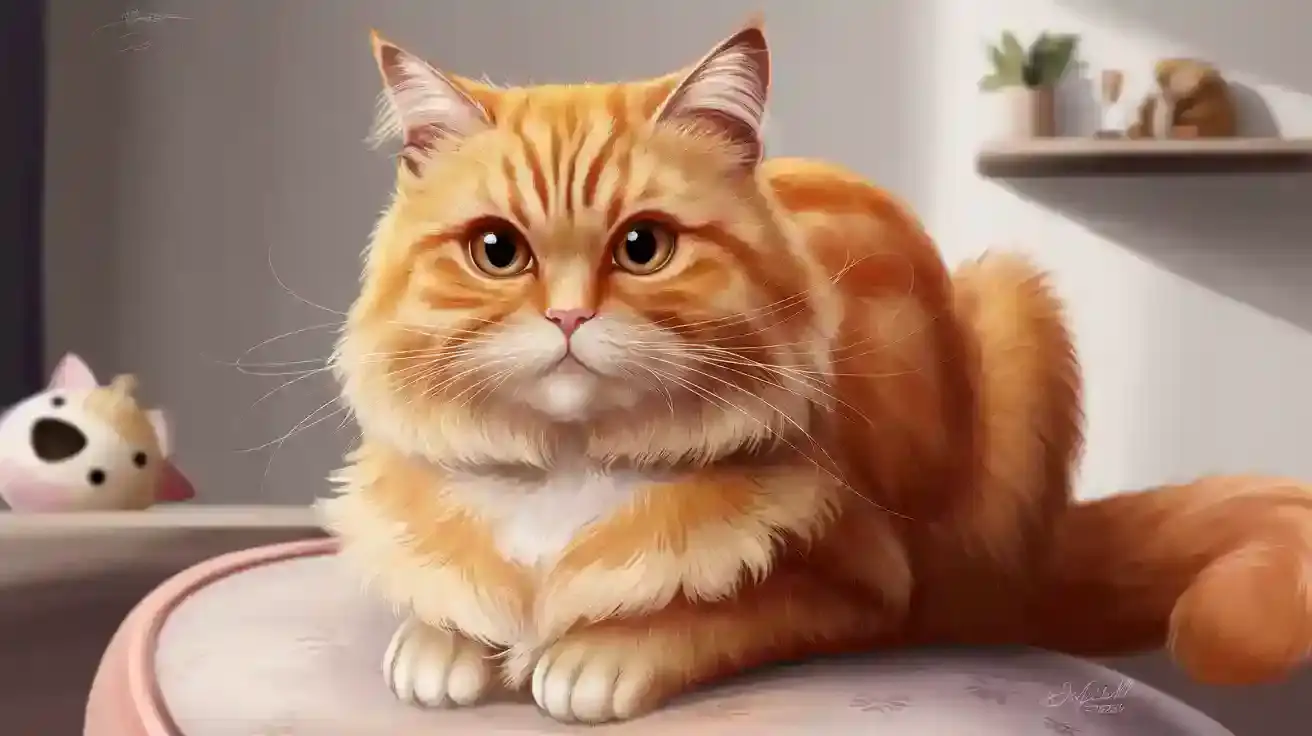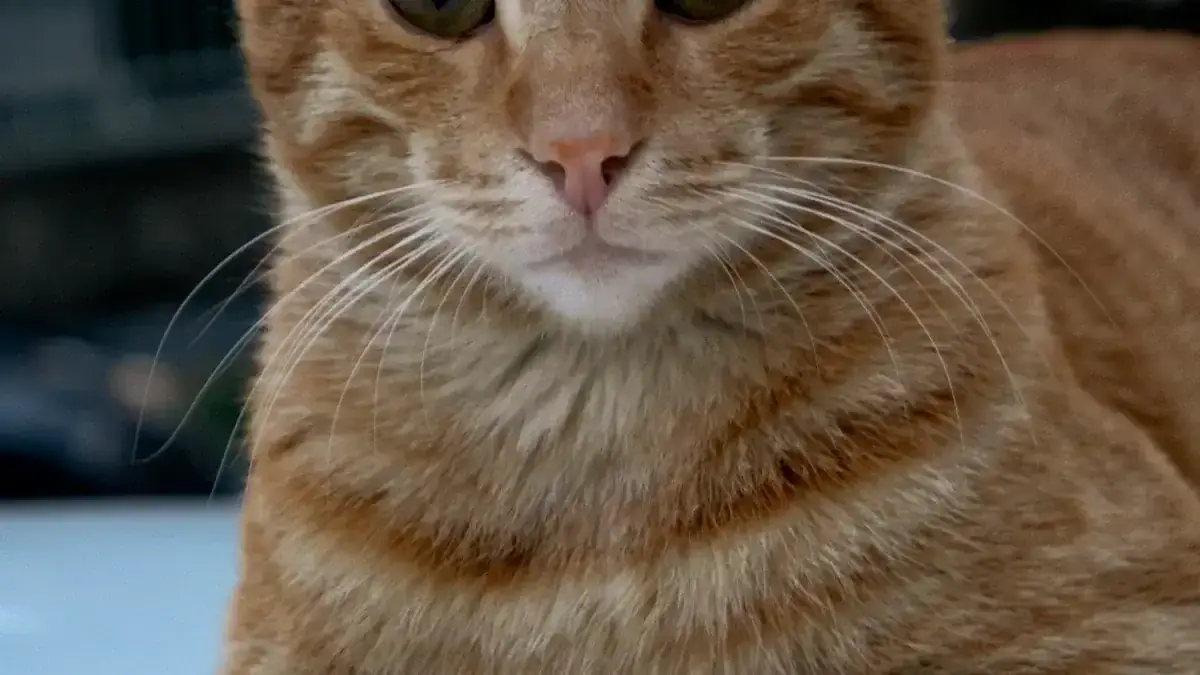The Best Fluffy Pancakes recipe you will fall in love with. Full of tips and tricks to help you make the best pancakes.

Ginger cats get their bright orange fur from their genes, specifically from a unique genetic trait. The O gene, located on the X chromosome, is responsible for producing the orange color by creating pheomelanin, the pigment that gives rise to those vibrant orange shades. Recent studies have shown that a missing section of DNA in the ARHGAP36 gene enhances the production of pheomelanin, which leads to the striking coloration. This genetic insight helps answer the question: what causes cats to be ginger? It also explains why male ginger cats are more common than females, as they only need one affected X chromosome to exhibit the full ginger coloration.
Key Takeaways
Ginger cats have orange fur because of the ‘O’ gene on the X chromosome. This gene makes a pigment called pheomelanin.
Male ginger cats are more common than females. Males need one ‘O’ gene from their mom to be orange. Females need the gene from both parents.
Ginger cats usually have special tabby patterns. These patterns depend on genes that control stripe or spot size and number.
The Genetics Behind Ginger Cats

The ‘O’ Gene and Pheomelanin
Ginger cats have orange fur because of the ‘O’ gene. This gene is found on the X chromosome. It makes pheomelanin, a pigment that creates orange and red colors. When the ‘O’ gene works, it tells fur cells to make more pheomelanin. This gives ginger cats their bright orange coats. Without this gene, cats wouldn’t have their fiery orange shades.
Pheomelanin doesn’t just change fur color. It also affects skin and eye color. This means the ‘O’ gene helps give ginger cats their special look.
The ARHGAP36 Gene and Missing DNA
Scientists found another gene linked to ginger cats. The ARHGAP36 gene, also on the X chromosome, has a missing DNA part in ginger cats. This missing piece boosts pheomelanin production, making their fur even more orange.
Researchers studied ginger cats and compared them to tortoiseshell and calico cats. Here’s what they learned:
Study Details | Results |
|---|---|
First Study | Found ARHGAP36 gene causes orange fur, tied to a DNA variant. |
Second Study | Confirmed the same DNA variant in orange, tortoiseshell, and calico cats worldwide. |
These studies show how the ARHGAP36 gene makes ginger cats’ fur so bright. Scientists think this gene might also affect health and personality.
Why Male Ginger Cats Are Common
Male ginger cats are more common because of their genes. The orange color gene is on the X chromosome. Male cats have one X and one Y chromosome. They only need the ‘O’ gene from their mom to be ginger.
Female cats have two X chromosomes. To be fully ginger, they need the ‘O’ gene from both parents. This is less likely, so female ginger cats often have mixed fur patterns like tortoiseshell or calico.
About 80% of ginger cats are male. Their unique genes make them stand out from other cats.
Traits and Patterns in Ginger Cats
Tabby Patterns in Ginger Cats
Ginger cats often have tabby patterns on their fur. These patterns are not random but come from their genes. Genes like Dkk4 and Taqpep decide how big or small the markings are. They also control how many stripes, swirls, or spots appear. These genes work early when hair follicles are forming, shaping the fur’s look.
Tabby patterns can look very different on ginger cats. Some have clear stripes, while others have softer, blended designs. Breeds like Savannah and Abyssinian show how genes can change these patterns. Here’s a simple breakdown of what affects tabby patterns:
Evidence Type | Description |
|---|---|
Genetic Mechanism | Genes like Dkk4 and Taqpep decide tabby marking size and number. |
Developmental Analysis | Patterns form during hair growth, shaping the skin early on. |
Comparative Findings | Breeds like Savannah and Abyssinian show how genes affect patterns. |
These patterns make ginger cats stand out. Whether bold stripes or soft swirls, tabby markings add to their beauty.
Personality Traits of Ginger Cats
Ginger cats are known for being friendly and social. Many owners say their ginger cats love attention and enjoy being around people. They might greet you at the door or sit next to you on the couch.
Their personalities can differ, but ginger cats are often playful and curious. They like exploring, playing with toys, or interacting with other pets. Some studies suggest their genes may influence their behavior, but their environment matters too.
If you want a cat that is warm and friendly, a ginger cat could be perfect. Their bright fur matches their lively and loving personality, making them great companions.
Are Ginger Cats Known for Specific Behaviors?
Do ginger cats act differently from other cats? While all cats share some traits, ginger cats are often more affectionate. They form strong bonds with their owners and enjoy spending time with people.
Many ginger cats are talkative. They meow to get attention or when they’re hungry. They also love to play. You might see them chasing toys, climbing, or exploring new places.
Some scientists think their behavior might be linked to the same genes that give them orange fur. For example, the ARHGAP36 gene, which affects fur color, might also influence their personality. More research is needed, but ginger cats are full of energy and charm, making them fun pets to have.
Fun Facts About Ginger Cats
Ginger Cat Breeds and Their Special Traits
Ginger cats belong to many breeds, each with unique features. Popular breeds include Maine Coon, British Shorthair, and Bengal. These cats often have orange fur with tabby patterns, making them stand out.
Maine Coons are big cats with friendly personalities. British Shorthairs have soft coats and calm, loving natures. Bengals look wild with bold markings and are very active.
Here’s a simple list of ginger cat breeds:
Breed | Special Traits |
|---|---|
Maine Coon | Large size, gentle nature, and fluffy orange fur. |
British Shorthair | Soft coat, relaxed personality, and striking tabby patterns. |
Bengal | Wild look, energetic behavior, and bold orange markings. |
These breeds are loved for their looks and personalities. Whether you want a calm friend or a playful pet, there’s a ginger cat for you.
Ginger Cats in Culture and History
Ginger cats are important in stories and traditions. Many cultures see orange cats as symbols of luck and happiness. Their bright fur and friendly nature make them popular pets worldwide.
In books and movies, ginger cats often play fun roles. Garfield is a famous example, showing their humor and charm. Their ability to connect with people adds to their cultural importance, bringing joy to families everywhere.
Here’s how ginger cats are part of culture:
Aspect | Details |
|---|---|
Folklore | Seen as lucky and bringing good fortune in many traditions. |
Books & Movies | Featured in stories like Garfield, showing their humor and appeal. |
Human Connection | Loved for their bright personalities and bond with owners. |
Ginger cats continue to be admired for their beauty and friendly nature. They are loved in both history and modern times.
Famous Ginger Cats in Media
Ginger cats are stars in movies, cartoons, and online videos. Their bright fur and playful nature make them unforgettable.
Some well-known ginger cats are:
Garfield: A funny and lazy comic strip cat.
Grumpy Cat: Famous for her frown and viral internet fame.
Choupette: A stylish cat with a luxurious life.
These orange cats charm people with their tiger-like looks and fun personalities. Their fame shows how much people love them. From cartoons to social media, ginger cats leave a lasting impression everywhere.
Now you understand why cats have orange fur. Their bright color comes from special genes like the ‘O’ gene and pheomelanin. The ARHGAP36 gene also plays a role in making them orange. Male ginger cats are more common because of how they inherit these genes. These cats are loved for their cheerful color and kind nature. Scientists are still studying how their genes affect their health and actions.
FAQ
How are ginger cats different from other cats?
Ginger cats are special because of their orange fur. This color comes from the ‘O’ gene and pheomelanin. Their genes also affect their fur patterns and behavior.
How many ginger cats are male?
About 80% of ginger cats are male. Male cats need just one X chromosome with the ‘O’ gene to have orange fur.
What patterns do ginger cats usually have?
Ginger cats often have tabby patterns like stripes, swirls, or spots. These designs are made by genes such as Dkk4 and Taqpep.








